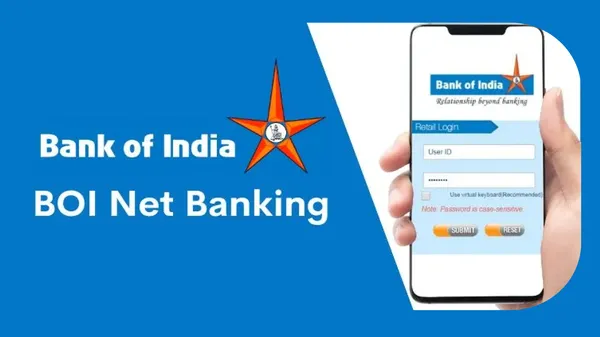In today’s dynamic tax landscape, businesses regularly grapple with the intricacies of compliance and maximizing available credits. One such significant regulation is CBIC Rule 86B, which outlines important limits on Input Tax Credit (ITC) utilization. Whether you’re a tax professional or a business owner trying to make sense of these guidelines, understanding Rule 86B is crucial for optimizing your tax strategy while ensuring compliance with the latest norms.
In this article, we’ll take a deep dive into what CBIC Rule 86B entails, why it was introduced, and how it affects the way you manage your ITC. Along the way, we’ll highlight key changes, provide actionable tips for compliance, and explore potential strategies to navigate this evolving policy landscape.
What is CBIC Rule 86B?
At its core, CBIC Rule 86B was introduced by the Central Board of Indirect Taxes and Customs (CBIC) to provide clarity and structure on the utilization of Input Tax Credit. ITC, a critical element under the Goods and Services Tax (GST) regime, allows businesses to reduce their tax liability by claiming credit for the tax already paid on inputs. However, as the tax framework becomes more complex, regulators found it necessary to specify certain limitations on ITC utilization to prevent misuse and ensure transparency.
Key Highlights of Rule 86B:- Limitations on Utilization: Rule 86B sets a cap on how much ITC can be utilized in a given period or for particular transactions. This means that even if you have accumulated a large credit, you might be restricted in applying it wholly towards your tax liabilities.- Stricter Documentation & Reporting: Businesses are required to maintain clear documentation and timely reporting to justify their ITC claims. This includes meticulous record-keeping of invoices, tax payments, and any adjustments.- Focus on Compliance: By imposing these restrictions, the regulatory body aims to curb excessive credit claims and potential fraud. The rule is designed to promote a more disciplined approach towards ITC utilization and safeguard the integrity of the GST framework.
Why Were These Limits Introduced?
There are several reasons that led to the implementation of Rule 86B. Understanding the rationale behind the rule can help businesses appreciate the importance of stringent ITC management.
Preventing Abuse of Credit
One of the primary motivations was to deter practices that allowed businesses to claim more credit than they were legitimately entitled to. In some instances, the accumulation of ITC could be used as a tool to manipulate tax liabilities, creating imbalances in the system. The limits ensure that credit is used judiciously and in a manner that reflects actual business activities.
Enhancing Transparency and Accountability
By clearly demarcating the bounds within which ITC can be utilized, the authorities have paved the way for greater transparency in tax filings. With stricter reporting requirements in place, auditors and tax officials can more easily trace credits back to genuine taxable transactions, thus reducing discrepancies.
Aligning with Broader Tax Reforms
Over time, GST and other indirect tax reforms have necessitated continuous adjustments in guidelines. Rule 86B is part of a broader effort to calibrate the tax system in response to the evolving economic environment. Its alignment with other regulatory measures ensures that the overall framework remains consistent, fair, and adaptable to change.
Key Provisions and How They Impact Businesses
For businesses, the introduction of Rule 86B means a few critical changes in how ITC is managed. Let’s take a closer look at the main provisions and their implications for day-to-day operations:
Understanding the Cap on ITC Utilization
One of the most significant aspects of Rule 86B is the establishment of a cap on ITC utilization. This doesn’t mean that businesses lose out on their available credit; rather, it dictates the pace at which these credits can be offset against tax liabilities.
- Periodic Limits: Depending on the accounting cycle or reporting period, there might be a predefined ceiling on the amount of ITC that can be deducted. This forces businesses to plan their tax payments and credit utilization more strategically.
- Transaction-Specific Limits: In some scenarios, the rule may impose limits on specific types of transactions. For example, credits arising from certain high-risk sectors or those involving expensive capital goods might be subject to tighter scrutiny.
Enhanced Compliance and Documentation
With the new limits, compliance becomes even more critical. Businesses must ensure that:- Records are Precise and Up-to-Date: Keeping detailed records of all input purchases, tax payments, and credits claimed is essential. This includes maintaining both digital and physical copies of invoices.- Timely Filing and Reconciliation: Regular financial reconciliations to match ITC claimed with actual business transactions help prevent discrepancies. Moreover, ensuring that all filings are made within the stipulated deadlines reduces the risk of penalties.- Internal Audits: Implementing periodic internal audits can detect errors or potential fraud early on. This proactive measure not only ensures compliance but also contributes to improved financial management.
Impact on Cash Flow and Tax Planning
The limits on ITC utilization, while primarily aimed at curbing fraud, can also have broader financial implications:- Managing Liquidity: Since businesses can’t immediately offset all ITC against tax liabilities, there may be an impact on cash flow. Companies need to plan for interim cash requirements, especially during high expenditure periods.- Strategic Utilization of Credits: Tax planning now requires a more nuanced approach. Businesses must evaluate which credits to utilize immediately and which to carry forward, optimizing their tax use over multiple periods.- Forecasting and Budgeting: Accurate forecasting becomes imperative when ITC cannot be fully leveraged in a given period. Budgeting practices must now consider the potential shortfall between available credit and permissible utilization.
Strategies for Effective ITC Management Under Rule 86B
Navigating the new limits may seem challenging at first, but with the right strategies, businesses can manage their ITC efficiently while staying compliant. Here are some actionable tips:
1. Invest in Robust Accounting Systems
The backbone of effective ITC management lies in the ability to track and reconcile transactions accurately. Business owners should invest in updated accounting software capable of:- Real-Time Data Entry: Ensuring that every transaction is captured as it occurs.- Automated Reconciliation: Reducing manual errors by automatically matching ITC claims with invoice data.- Compliance Alerts: Generating alerts when utilization limits are approached, helping businesses plan accordingly.
2. Strengthen Internal Controls
Internal controls play a pivotal role in minimizing discrepancies in ITC claims. Consider the following measures:- Regular Training: Keep your accounting and compliance teams updated on the latest guidelines under Rule 86B. Regular training ensures that everyone is aware of changes and their implications.- Internal Audits: Schedule routine internal audits to verify that all ITC claims are supported by adequate documentation. This not only bolsters compliance but also prepares the organization for external audits.- Segregation of Duties: Implement policies that minimize the risk of fraud by ensuring that no single person has control over all aspects of the ITC process.
3. Collaborate with Tax Experts
Given the nuances of Rule 86B, it is beneficial to work closely with tax advisors or consultants who specialize in GST compliance. Their expertise can help:- Interpret Complex Provisions: Tax professionals can break down the rule’s complexities into actionable insights tailored to your business.- Optimize Credit Utilization: Expert advice can help you strategically plan the utilization of ITC, minimizing cash flow disruptions.- Prepare for Audits: With regular consultations, your business can be better prepared for both internal and external audits, reducing the risk of penalties.
4. Regularly Update Financial Practices
The regulatory environment is continuously evolving, and what works today might need adjustments tomorrow. Ensure that your financial practices are flexible:- Stay Informed: Regularly review updates from the CBIC and other regulatory bodies. Subscribing to industry newsletters or attending seminars can keep you ahead of the curve.- Revisit Policies Periodically: Make it a practice to review and update internal policies regarding ITC management at least once a year. This proactive approach ensures that your practices remain aligned with current guidelines.- Invest in Technology: Consider emerging technologies like artificial intelligence and data analytics for predictive insights. These tools can help forecast ITC utilization patterns and plan for future tax liabilities more accurately.
The Broader Implications of Rule 86B
Beyond its immediate impact on ITC utilization, Rule 86B reflects a broader trend within the tax framework. Regulators are increasingly focused on:- Ensuring Fair Practices: By curbing excessive credit claims, the policy aligns with efforts to create a more transparent and equitable tax environment.- Boosting Revenue Integrity: With tighter controls in place, the tax authorities are better positioned to identify discrepancies. This not only boosts compliance but also enhances overall revenue collection.- Encouraging Responsible Financial Management: For businesses, the rule serves as a reminder to adopt more disciplined and transparent financial practices, contributing to long-term stability.
Looking Ahead: The Future of ITC Management and Tax Compliance
While Rule 86B introduces certain constraints, it also paves the way for a future where tax compliance is streamlined and transparent. As businesses adapt to these changes, we can expect:- Increased Use of Technology: Automation and advanced analytics will further simplify the processes, making it easier to track and optimize ITC utilization.- Evolving Regulatory Guidelines: As the GST system matures, additional guidelines may be introduced to address emerging challenges. Staying agile and adaptive will be key to remaining compliant.- Enhanced Collaboration: Governments and industry stakeholders are likely to collaborate more closely, designing systems that balance compliance with ease of doing business.
Final Thoughts: Embrace Change and Optimize Your Tax Strategy
CBIC Rule 86B undoubtedly brings new challenges in managing Input Tax Credit. However, with the right strategies, businesses can turn these challenges into opportunities. By investing in robust technology, strengthening internal controls, and staying informed of regulatory changes, you can not only comply with the new limits but also optimize your overall tax strategy.
In this ever-evolving landscape, understanding and adapting to changes like Rule 86B is essential for long-term financial health. Whether you’re a small enterprise or a large corporation, staying proactive about ITC management can make a significant difference in your cash flow and overall tax liability.
Remember, change in regulations need not be intimidating. With a focused approach, clear communication within your organization, and expert guidance when needed, you can navigate these limits successfully and continue to drive your business forward with confidence.
Stay informed, stay compliant, and use Rule 86B as an opportunity to streamline your finance processes and reinforce the integrity of your tax practices.




.webp)

.webp)



.webp)
.webp)
.webp)
.png)